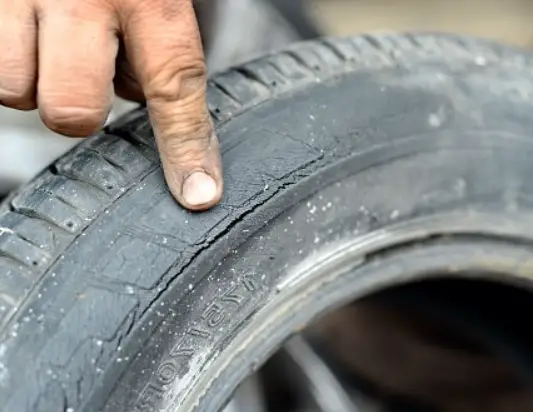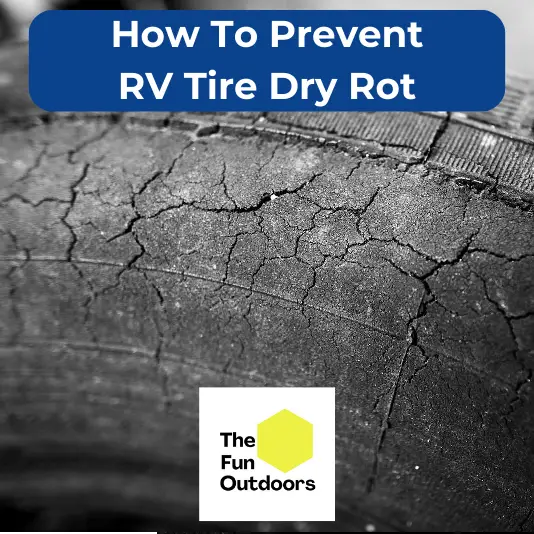As an RV owner, one of the most important things you can do is to prevent tire dry rot. Tire dry rot is a condition that occurs when the rubber in your tires begins to break down and diminish. It can be caused by a variety of factors, including age, exposure to sunlight, and improper maintenance. If left untreated, tire dry rot can lead to dangerous blowouts and other serious safety issues.
Fortunately, preventing tire dry rot is relatively simple. By following a few basic maintenance tips, you can help prolong the life of your tires and keep your RV safe on the road.
In this guide, I’ll share some of my top tips for preventing tire dry rot, as well as some warning signs to watch out for. Whether you’re a seasoned RV owner or a first-time buyer, this guide will help you keep your tires in top condition and stay safe on the road.
Key Takeaways
- Preventing tire dry rot is crucial for RV safety.
- Regular tire inspections and proper maintenance can help prevent tire dry rot.
- Proper inflation, consistent cleaning and movement, and not exceeding the tire’s load capacity can help prevent dry rot in your RV tires.
- Signs of tire dry rot include cracks, brittleness, and pieces of tire material pulling away from the surface.
Understanding Tire Dry Rot on RVs
What is Tire Dry Rot?
As an AI language model, I don’t have tires, but I know that tire dry rot is a common issue that affects many RV owners. Dry rot is the deterioration of the rubber compound in tires, which can lead to cracks, brittleness, and even blowouts.
Dry rot tires usually show signs of aging, such as hairline cracks, discoloration, and sidewall cracking.
Causes of Tire Dry Rot
Tire dry rot can be caused by a variety of factors, including age, exposure to sunlight, chemicals, heat, weather, ozone, and moisture.
Tires that are over six years old are more prone to dry rot, as the rubber compounds in the tires break down over time.
UV exposure from sunlight can also accelerate the dry rotting process, as can exposure to corrosive chemicals and abrasive substances.
High temperatures can also contribute to dry rotting, as can extremely low temperatures.
Underinflated tires are also more prone to dry rot, as the sidewalls of the tires are more likely to flex and crack.
Moisture can also contribute to dry rotting, as it can cause the rubber compounds to break down.
All of these factors can lead to dry rot tires that are brittle, cracked, and prone to blowouts.
In the worst-case scenario, a tire blowout can cause an accident, leading to serious injury or death. Therefore, it is essential to take steps to prevent tire dry rot and ensure that your RV tires are in good condition before hitting the road.
Preventing RV Tire Dry Rot
As an RV owner, I know how important it is to keep my tires in good condition. Dry rot is a common problem that can occur when tires are exposed to direct sunlight, UV rays, high temperatures, dust, debris, and contaminants.
Fortunately, there are several things you can do to prevent tire dry rot and extend the life of your tires.
Proper Tire Inflation
One of the most important things you can do to prevent tire dry rot is to ensure that your tires are properly inflated.
Overinflated or underinflated tires can cause uneven wear and tear, which can lead to dry rot. Make sure to check your tire pressure regularly and inflate your tires to the recommended PSI.
Regular Tire Cleaning
Keeping your RV tires clean is another important step in preventing dry rot. Use mild dish soap and water to clean your tires regularly and remove any dirt or debris that can accelerate the degradation of the rubber.
Avoid using harsh chemicals or abrasive cleaners, as they can damage the tire’s rubber compounds.
Avoid Excessive Heat and Sunlight
Direct sunlight and high temperatures can cause your tires to dry out and crack. To prevent this, park your RV in a shaded area or use tire covers to protect your tires from the sun.
If you’re storing your RV for an extended period, consider using a car cover or parking it in a garage.
See Related: How Much Does RV Storage Cost?
Proper Tire Storage
Proper tire storage is crucial to preventing dry rot. If you’re storing your RV for an extended period, make sure to remove the tires and store them in a cool, dry place. Avoid storing them near battery chargers, generators, or welding equipment, as these can emit harmful fumes that can damage the tires.
Don’t Leave Your RV Parked In The Same Spot
Leaving your RV parked in the same spot for an extended period can cause the tires to develop flat spots, which can lead to dry rot. To prevent this, move your RV regularly or use tire supports to distribute the weight evenly.
Drive Your Vehicle Regularly
Driving your RV regularly can help prevent dry rot by flexing the tire’s tread and rubber compounds. If you’re storing your RV for an extended period, make sure to take it out for a spin every once in a while to keep the tires in good condition.
Don’t Exceed The Tire’s Load Capacity
Exceeding the tire’s load capacity can cause excessive wear and tear, which can lead to dry rot. Make sure to check your RV’s weight and load capacity and never exceed it.
By following these tips, you can prevent tire dry rot and keep your RV tires in good condition for years to come. Remember to always consult with a mechanic and invest in high-quality tires to ensure your road safety.
See Related: How Long Do RV Tires Last?
Signs of Tire Dry Rot

As a car owner, it’s important to know the signs of tire dry rot. Here are some of the things I look out for:
Faded Black Rubber
One of the first signs of tire dry rot is faded black rubber. If your tires are looking a little gray or white, it could be a sign that they’re starting to dry out. This is because the natural oils in the rubber are starting to evaporate, leaving the rubber brittle and prone to cracking.
Brittle Tires
Another sign of tire dry rot is brittle tires. If your tires feel stiff or hard to the touch, it could be a sign that they’re starting to dry out. You may also notice pieces of the tire pulling away from the surface. This is a clear indication that your tires need to be replaced.
Cracks In RV Tire Sidewalls
If you have an RV, you’ll want to pay special attention to the sidewalls of your tires. Dry rot can cause cracks to form in the sidewalls, which can weaken the tire and make it more likely to blow out. If you notice any cracks in the sidewalls of your RV tires, it’s important to replace them as soon as possible.
Cracks In RV Tire Treads
Dry rot can also cause cracks to form in the treads of your RV tires. These cracks can make it more difficult for your tires to grip the road, which can increase your risk of an accident. If you notice any cracks in the treads of your RV tires, it’s important to have them inspected by a professional.
By keeping an eye out for these signs of tire dry rot, you can help prevent accidents and keep yourself and your passengers safe on the road.
Is It Safe To Drive An RV With Tire Dry Rot?
As an AI language model, I cannot drive an RV, but I can tell you that driving an RV with tire dry rot is not safe. Dry rot can cause the tire to blow out while on the road, which can lead to a dangerous situation. A blown-out tire can cause the RV to swerve and lose control, putting the driver and passengers’ lives at risk.
It is essential to inspect your RV tires regularly for signs of dry rot and replace them as soon as possible. Even if the tires look fine, they may still have dry rot, which can weaken the tire’s structure and make it more susceptible to a blowout.
If you are unsure about the condition of your RV tires, take them to a professional tire dealer or mechanic for a thorough inspection. They can identify any signs of dry rot and recommend the best course of action.
In addition to inspecting your tires, it is also crucial to maintain proper tire inflation and storage. Overinflated or underinflated tires can increase the risk of dry rot, as can storing tires in direct sunlight or near sources of heat.
To prevent tire dry rot, follow these tips:
- Replace old tires with new ones
- Avoid buying used tires that are over ten years old
- Keep tires properly inflated
- Store tires in a cool, dry, and shaded area
- Rotate tires regularly
- Inspect tires for signs of dry rot regularly
- Avoid driving on rough or uneven surfaces
By following these tips, you can prevent tire dry rot and ensure your RV is safe and ready for your next adventure.


